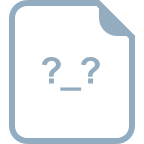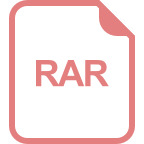
Preface
2
Chapter 2, Responding to Events, shows how to make use of events to drive an application
and allow the user to interact with it through the user interface. This chapter starts with
an overview of what events are and how they work, and then continues on to cover how to
interact with a number of common events.
Chapter 3, Basic Building Blocks of a User Interface, discusses a number of the basic widgets
that are critical to the creation of nearly all user interfaces. You will be introduced to the usage
of widgets such as Buttons, Menus, and ToolBars in this chapter.
Chapter 4, Advanced Building Blocks of a User Interface, introduces you to some of the more
advanced widgets available in the wxPython control library. These widgets will allow you to
create tabbed interfaces and display more complex types of data in your user interface.
Chapter 5, Providing Information and Alerting Users, shows multiple techniques for keeping
the users of an application informed about what is going on and to provide them with help on
interacting with the various controls in the applications interface. This chapter will show you
how to use various tooltip controls, message boxes, and splash screens.
Chapter 6, Retrieving Information from Users, covers the use of common dialogs to retrieve
information from users in order to perform tasks such as opening les, searching text, and
even printing. As a part of the recipes for the usage of
FileDialog and FindDialogs
you will create a simple Notepad-like application.
Chapter 7, Window Layout and Design, is where you will be introduced to a number of
concepts and techniques for designing your user interfaces in wxPython. The majority of
this chapter will explain the use of Sizers to allow you to quickly implement cross-platform
user interfaces.
Chapter 8, Drawing to the Screen, gives an introduction to the basics of how a user interface
works, by showing you how to use some of the primitive tools to implement your own custom
user interface objects. This chapter will show you how to use Device Contexts to perform
custom drawing routines by creating a number of custom display controls.
Chapter 9, Design Approaches and Techniques, introduces you to a number of common
programming patterns, and explain how to apply them to wxPython applications. The information
in this chapter will provide you with an understanding of some strong approaches and
techniques to software design that will not only serve you in writing wxPython applications but
can also be generally applied to other frameworks as well, to expand your programming toolbox.
Chapter 10, Creating Components and Extending Functionality, shows you how to extend
the functionality of existing user interface components, as well as how to create your own
controls. The recipes in this chapter combine much of the information presented in Chapters
2, 7, 8, and 9 together to create new controls and to enhance the capabilities of some of the
more basic ones provided by wxPython.





















